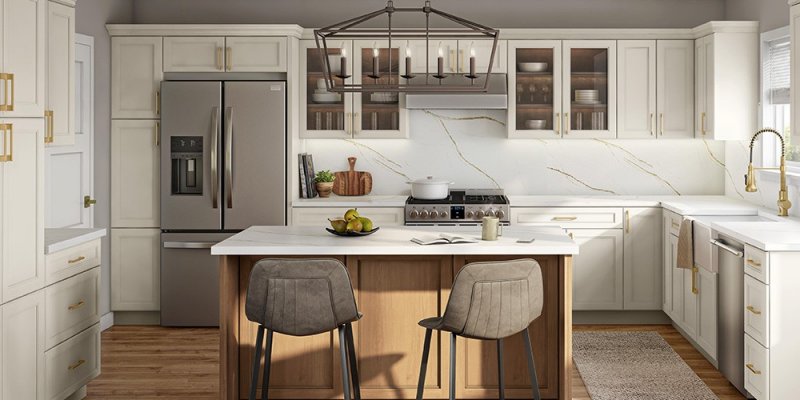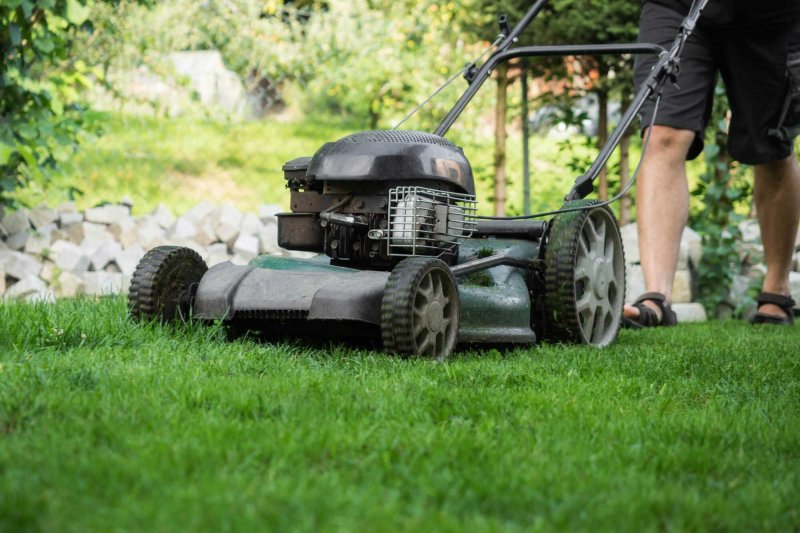
Kitchen cabinets are more than just storage units; they are the backbone of your kitchen's functionality, the canvas for its aesthetic, and a significant investment in your home. Rushing this decision can lead to regret, while thoughtful consideration ensures a space that is beautiful, efficient, and perfectly tailored to your lifestyle. With countless styles, materials, and configurations available, the process can feel overwhelming. To navigate this crucial purchase with confidence, here are five essential factors to consider before you ever sign on the dotted line.
1. Define Your Budget and Understand the Value Tiers
Before you fall in love with a particular design, establish a clear budget. This isn't just about the sticker price of the cabinets themselves, but also encompasses installation, hardware (knobs, pulls), potential custom accessories, delivery fees, and even the cost of existing cabinet removal. Kitchen cabinets generally fall into three main categories, each with its own price point and level of customization:
- Stock Cabinets: These are pre-manufactured in standard sizes, styles, and finishes, offering the most budget-friendly option. They are readily available and ideal for those on a tight timeline or budget, but offer limited design flexibility. You'll find fewer options for unique sizes or specialized storage solutions.
- Semi-Custom Cabinets: A popular mid-range choice, semi-custom cabinets offer a broader range of sizes, door styles, finishes, and accessories than stock options. They are still manufactured using standard components but allow for some modifications, such as changing drawer depths or adding decorative elements. This category provides a good balance between cost and personalization.
- Custom Cabinets: At the highest price point, custom cabinets are built to your exact specifications. This offers unlimited design flexibility, unique dimensions, specialized storage solutions crafted precisely for your needs, and a vast array of material and finish choices. While the most expensive, they provide unparalleled quality and a truly personalized kitchen.
Beyond the initial cost, consider the long-term value. Higher quality cabinets, while more expensive upfront, often offer superior durability, better functionality, and can significantly increase your home's resale value. Factor in the ROI (Return on Investment) – a well-chosen cabinet system can pay dividends for years to come.
2. Prioritize Construction Quality and Material Durability
The beauty of cabinets can be deceiving; what lies beneath the surface is paramount to their longevity and performance. Investing in high-quality construction and durable materials will prevent sagging shelves, sticking drawers, and chipped finishes down the line.
Key areas to scrutinize include:
- Box Construction:
- Particleboard/Furniture Board: The least expensive option, made from wood chips and resin. It's susceptible to moisture damage and can sag under heavy loads.
- MDF (Medium-Density Fiberboard): Denser and more stable than particleboard, less prone to warping, and offers a smooth surface for painting. Still susceptible to significant water damage.
- Plywood: The most durable and stable option, made from layers of wood veneer glued together. It holds screws better, resists moisture more effectively, and is less prone to warping or sagging. Look for multi-ply (7-ply or more) construction.
- Door Materials:
- Solid Wood: Classic and durable, but can expand and contract with humidity changes, potentially leading to cracks in the finish. Common woods include maple, cherry, oak, and birch.
- MDF: Excellent for painted finishes due to its smooth surface and stability.
- Thermofoil: A vinyl film heat-applied to MDF, offering a seamless, durable, and easy-to-clean surface, often mimicking wood grain or solid colors. Can be susceptible to heat damage.
- Veneer: A thin layer of real wood applied over a substrate (usually plywood or MDF), offering the look of solid wood at a lower cost and better stability.
- Hardware: Don't overlook the hinges and drawer slides.
- Hinges: Look for adjustable, soft-close hinges that prevent doors from slamming.
- Drawer Slides: Full-extension slides allow drawers to pull out completely, providing full access to contents. Soft-close mechanisms are a must for quiet operation and preventing wear. Opt for sturdy, undermount slides for a cleaner look and better weight capacity.
- Finishes: A good finish protects the material and enhances appearance. Look for multi-step finishing processes that include sanding, staining/painting, and a durable top coat (like conversion varnish) that resists chips, scratches, and moisture.
3. Harmonize Style and Design with Your Home's Aesthetic
Kitchen cabinets are a dominant visual element, setting the tone for the entire space. Your choice of style and design should not only reflect your personal taste but also complement the overall architectural style and existing decor of your home.
- Door Styles:
- Shaker: Timeless and versatile, featuring a flat center panel and square edges. Works well in traditional, transitional, and contemporary kitchens.
- Flat-Panel (Slab): Modern and minimalist, offering clean lines and a sleek appearance.
- Raised-Panel: Traditional and formal, with a raised center panel creating a more ornate look.
- Inset: Doors and drawers sit flush within the cabinet frame, offering a high-end, furniture-like appearance, but often at a higher cost.
- Color and Finish: Light colors can make a small kitchen feel larger and brighter, while dark colors add drama and sophistication to a spacious room. Consider the interplay with your flooring, countertops, and wall color. Do you want stained wood that shows the natural grain, or a painted finish for a more uniform look? Matte, semi-gloss, or high-gloss?
- Hardware (Knobs and Pulls): These are the "jewelry" of your cabinets. Choose hardware that complements the cabinet style and finish – minimalist pulls for modern cabinets, ornate knobs for traditional styles.
- Long-Term Appeal: While trends are fun, consider how your chosen style will age. Classic designs tend to have more enduring appeal, preventing your kitchen from looking dated too quickly. If you love a trend, consider incorporating it through easily changeable elements like lighting or accessories, rather than permanent fixtures like cabinets.
4. Optimize Functionality and Plan Your Layout
Beyond aesthetics, cabinetry must be highly functional, supporting your cooking habits, storage needs, and daily routines. A well-designed kitchen maximizes efficiency and makes everyday tasks a joy.
- Assess Your Needs: Take an inventory of everything you need to store. Do you have a lot of small appliances, bulky cookware, or a large collection of spices? Do you prefer open shelving for display or enclosed storage for a streamlined look?
- Specialized Storage Solutions: Modern cabinets offer an array of clever organizing solutions:
- Pantry Pull-outs: Tall, narrow cabinets with shelves that slide out for easy access to groceries.
- Lazy Susans/Blind Corner Pull-outs: Maximize storage in awkward corner cabinets.
- Spice Racks: Integrated drawers or door-mounted racks keep spices organized and accessible.
- Trash Pull-outs: Hidden bins for refuse and recycling.
- Plate Dividers/Peg Systems: Keep dishware neat and secure.
- Pot & Pan Drawers: Deep, wide drawers for heavy cookware.
- Appliance Garages: Hide toasters, blenders, and coffee makers to keep countertops clutter-free.
- Layout and Ergonomics: Work with your designer to create a layout that optimizes the "working triangle" (sink, refrigerator, range) and ensures comfortable access to frequently used items. Consider upper cabinet height, drawer placement for easy reach, and sufficient countertop space around key work zones. Think about workflow: where do you prep food, where do you cook, and where do you clean?
5. Consider Installation Methods and Project Timeline
The perfect cabinets are only as good as their installation. Understanding the installation process and realistically estimating the timeline are crucial steps for a smooth renovation.
- DIY vs. Professional Installation:
- DIY: Can save money if you have significant carpentry skills, the right tools, and ample time. However, even minor errors can compromise functionality and aesthetics, potentially voiding warranties.
- Professional: Recommended for most homeowners. Experienced installers ensure precise leveling, secure mounting, and correct alignment, leading to a flawless finish and protecting your investment. They also often carry insurance and can troubleshoot unforeseen issues.
- Lead Times: This is a critical factor often overlooked.
- Stock Cabinets: Generally available immediately or within a few weeks.
- Semi-Custom Cabinets: Can take anywhere from 4 to 12 weeks, depending on the manufacturer and level of customization.
- Custom Cabinets: Expect lead times of 8 to 20 weeks, as they are built from scratch. Ordering during peak seasons can extend these times.
- Delivery and Storage: Plan for when and where your cabinets will be delivered. Do you have adequate, secure, and climate-controlled space to store them until installation? Cabinets should acclimate to your home's humidity for several days before installation to prevent warping.
- Coordination with Other Trades: Cabinet installation is often a pivotal point in a kitchen renovation. Ensure its schedule aligns with other trades like plumbers (for sinks), electricians (for outlets and lighting), and countertop fabricators. Delays in one area can cascade through the entire project.
By meticulously considering these five critical factors, you'll transform the daunting task of purchasing kitchen cabinets into an empowering journey. The result will be a kitchen that not only looks stunning but also functions seamlessly, serving as the heart of your home for years to come.







0 Comments
Post Comment
You will need to Login or Register to comment on this post!